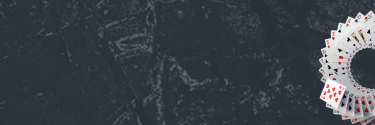Günümüzde online olarak yayın yapan sayısız platform aracılığı ile internet üzerinden son derece kolay bir şekilde birçok farklı bahis seçeneği üzerinden işlem yapabilir ve bu yol ile de kazanç elde etme şansına sahip olabilirsiniz. Bahis firmalarının sağlamış olduğu online yayınlar aracılığı ile ulaşabileceğiniz özel seçeneklerden biri de bahis bozdur seçeneği olarak karşımıza çıkıyor. Bu seçenek ile son derece avantajlı bir şekilde kazanan bahislerinizi bozdurabilir ve bu yol ile de kazançlarınızı garanti altına alabilirsiniz. Yani bahis bozdur özelliği, yapmış olduğunuz bir bahis işleminin kazanması halinde ve aynı zamanda karşılaşmaların tamamlanmaması halinde, firmanın size sunduğu miktar üzerinden kazancınızı alarak kuponunuzu satmanız anlamına geliyor. Özellikle de ilerleyen dakikalarda maçın tehlikeye girmesi ihtimaline karşın bu bahis seçeneğinin son derece avantajlı bir yapıya sahip olduğu yönünde bilgi verebiliriz. Şimdi de bahis bozdurmak işlemini bir örnek ile daha detaylı bir şekilde inceleyebilir ve bu yönde bilgiler verebiliriz.
Örnek olarak bir kombine bahis işlemi yaptığınızı varsayalım. Bu kupon dahilinde bulunan maçlar, oranlar ve bahis seçenekleri ise şu şekilde olsun;
- Fenerbahçe – Başakşehir maç sonucu toplam gol sayısı 4 -6 / Bahis Oranı: 2,10
- Galatasaray – Trabzonspor maç sonucu handikap 1 / Bahis Oranı: 2,70
- Beşiktaş – Göztepe maç sonucu 3,5 alt / Bahis Oranı: 1,90
Bu maç seçenekleri üzerinden yapmış olduğunuz 100 TL miktarındaki bir bahis işlemi ile normal şartlarda alabileceğiniz kazanç miktarı tam olarak 1077 TL’dir. Bu yönde karşılaşmaları canlı olarak takip ettiğinizi ve her bir maç için geçerli olan skorların da aşağıdaki gibi olduğunu varsayalım;
- Fenerbahçe – Başakşehir canlı skor: 3 – 1
- Galatasaray – Trabzonspor canlı skor: 2 – 0
- Beşiktaş – Göztepe canlı skor: 2 – 1
Bu canlı skorların oluşması halinde, anlık olarak kuponunuz kazanıyor demektir. Ancak ilerleyen dakikalarda herhangi bir canlı skor değişikliği halinde kuponunuzun tümü kaybedebilir ve bu durumda da hiç ikramiye alamayabilirsiniz. Dolayısı ile de kazancınızı anlık olarak kazanan maçlar üzerinden garantiye alabilmeniz için, bahis şirketleri aracılığı ile erişim sağlayabileceğiniz bahis bozdur oranları üzerinden kolaylıkla bozdurabilir ve bu yol ile de herhangi bir risk almadan direkt olarak karşılaşmalar üzerinden anlık olarak geçerli olan oranlar üzerinden kazancınızı bakiyenize ekleyebilirsiniz. Bu yönde sitenin ‘örnek’ olarak sunabileceği bahis bozdur oranlarının da aşağıdaki gibi olabileceğini söyleyebiliriz;
- Fenerbahçe – Başakşehir maç sonucu toplam gol sayısı 4 – 6 / Bahis bozdur oranı 1,70
- Galatasaray – Trabzonspor maç sonucu handikap 1 / Bahis bozdur oranı 2,10
- Beşiktaş – Göztepe maç sonucu 3,5 gol alt / Bahis bozdur oranı 1,50
Bu oranlar esas alınarak oluşturulan bahis bozdur toplam kazanç miktarını esas alabilir ve bu yol ile de bahis bozdur ikramiyesi aracılığı ile son derece kolay bir şekilde kazançlarınızı bakiyenize ekleyebilirsiniz. Aynı zamanda vermiş olduğumuz örnek Bahis Bozdur oranları dahilinde yenilenen kazanç miktarınız da 535 TL olarak revize edilecektir. Dolayısı ile de 100 TL üzerinden yapmış olduğunuz bahsinizin, kaybetme ihtimalini bertaraf edebilir ve bu yol ile de 535 TL’lik kazancı garantileyerek olası tüm risklerden korunabilirsiniz. Özellikle de bu örnek karşılaşmalar üzerinden, Beşiktaş – Göztepe maçında herhangi bir takımın gol atması üzerine kuponun direkt olarak kaybedeceğini bilmek gerekir. Dolayısı ile de bahis bozdur gibi avantajlı seçeneklerin bu noktada kullanılabileceğini ve bu yol ile de daha avantajlı bir şekilde kazançlarınızı garanti altına alabileceğinizi belirtebiliriz. Firmaların sağlamış oldukları bahis bozdurma seçeneği kapsamında genel olarak verilen ikinci oranların değişebildiğini ve örnek olarak göstermiş olduğumuz bu oranlar, bahis seçenekleri ve bahis bozdur oranlarının da sadece temsil olduğunu belirtmek gerekir. Dolayısı ile de sunulan bahis bozdur oranlarından, farklı sitelerde farklı şekillerde bularak yararlanabilir ve bu yönde de kazançlarınızı kolayca garanti altına alabilirsiniz.
Bahis bozdur (Kupon Satma) Nedir?
Kupon satma, bahsetmiş olduğumuz bahis bozdur seçeneğinin bir diğer adı olarak karşımıza çıkıyor. Dolayısı ile de bahis bozdur yerine, ikame olarak kupon satma seçeneğini bünyesinde bulunduran siteler aracılığı ile de aynı şekilde işlem yapabilir ve bu yönde de son derece avantajlı bir şekilde ve kaliteli bir şekilde kuponlarınız üzerinden elde edebileceğiniz kazançlarınızı garanti altına alarak işlemlerinize bu yönde devam edebilirsiniz. Genel olarak Türkiye’de online olarak yayın yapan bahis sitelerinin tamamı aracılığı ile son derece kolay bir şekilde ve kısa bir süre içerisinde bu seçeneklere erişim sağlayabilir ve bu yol ile de bahis bozdur özel hizmetinden yararlanarak kısa bir süre içerisinde kazançlarınızı garanti altına alabilirsiniz.
Bahis bozdurulan bahis siteleri içerisinde ilk olarak mobilbahis, hemenbahis ve süperbahis gibi Avrupa’nın dev bahis şirketlerinin yer aldığı yönünde bilgi verebiliriz. Bunun yanı sıra yine online olarak erişim sağlayabileceğiniz ve kaliteli bir yapıya sahip olan oddsring, betboo ve betsat gibi siteler aracılığı ile de aynı şekilde bahis bozdur seçeneğine erişebileceğinizi ve bu yol ile de ilgili seçenek üzerinden son derece avantajlı bir şekilde işlem yaparak kazanç elde edebileceğinizi söyleyebiliriz. Şimdi de bu seçenek ile nasıl işlem yapabileceğinizi açıklayabilir ve bu yönde de incelemeler yapabiliriz.
İlk olarak kaliteli, güvenilir ve aynı zamanda genel itibarı ile avantajlı yapıya sahip olan bir bahis sitesinin güncellenen ana sayfasına giriş yapmanız gerekiyor. Bu noktada ana sayfaya giriş yaptıktan sonra, üyelik panelini kullanarak son derece kolay bir şekilde ve kısa bir süre içerisinde üyelik hesabı alabilirsiniz. Genel olarak kişisel bilgiler ile ve iletişim bilgileri ile üyelik panelinde bulunan formu doldurarak Hesap Aç linkine tıklayabilir ve bu yol ile de bir üyelik hesabı alabilirsiniz. Ardından da belirtmiş olduğunuz mail adresine giriş yapabilir ve bu sayede de sitenin göndermiş olduğu linke tıklayarak son derece kolay bir şekilde hesabınızı aktive edebilirsiniz. Bu aşamadan sonra da sitenin ana sayfası aracılığı ile kullanıcı adı ve şifre bilgileriniz üzerinden kısa bir süre içerisinde giriş yapabilir ve para yatırma aşamasını tamamlayabilirsiniz. Daha sonra da spor bahisleri bölümüne giriş yaparak, firmanın sağlamış olduğu karşılaşmalar üzerinden bahis seçeneklerine erişim sağlayabilirsiniz. Genel olarak siteler, spor bahisleri bölümü aracılığı ile tamamlanan kombine bahis seçenekleri için bu özel hizmet seçeneğini sunmaktadır. Aynı zamanda sitelerin sağlamış olduğu sistem bahis seçenekleri ile ya da tek maç bahis seçenekleri ile de yine bu özel hizmet seçeneğini kullanabilir ve bu yol ile de kazançlarınızı yine garanti altına alabilirsiniz. Genel olarak bu aşamalar üzerinden yapmış olduğunuz kombine, tek maç ya da sistem bahis seçenekleri üzerinden kazanç elde ederken, bahis bozdur işlemi yapabilir ve bu sayede de kuponlarınız üzerinden elde edebileceğiniz kazançlarınızı garanti altına alabilirsiniz. Sitelerin sağladığı kupon paneli üzerinden bu bahis bozdur seçeneğini kullanabilir ve ilgili işlemleri tamamlayabilirsiniz.

